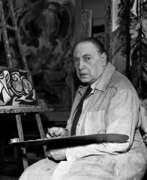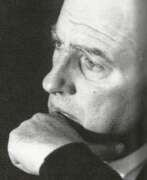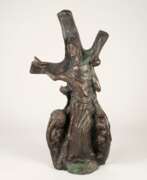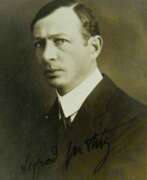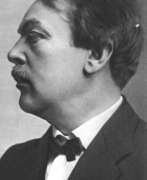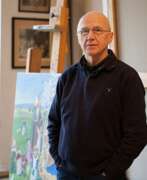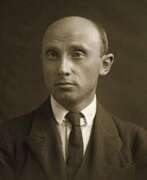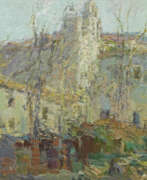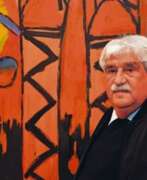Czech Republic Contemporary art


Jiří David is a contemporary Czech artist working in various techniques, including painting, sculpture, installation and photography. Co-founder of the art group Tvrdohlaví . His most famous media work is the neon heart over Prague Castle at the end of the last term of President Václav Havel.
Jiří David studied at the Prague Academy of Fine Arts. His work is characterised by a conceptual approach and a critical engagement with art history and social issues. He often creates large-scale installations that engage the viewer and explore the relationship between art and its audience.


Simon Dittrich is a German painter and graphic artist who lives and works in Stuttgart, Munich, Tuscany and Styria.
Dittrich studied painting at the University of Fine Arts in Berlin, is a member of the Munich and Darmstadt Secession, and a member of the Sudeten-German Academy of Sciences.
Simon Dittrich's early works are dominated by landscapes, animals and still lifes, characterized by varied color and clear lines that emphasize contours. His later works, however, gravitate towards figurative concepts with an abstract tendency.


Frantisek Emler was a Czech painter, draftsman, graphic artist, illustrator, and stage designer.
He studied at the Academy of Fine Arts in Prague, was a student at the Academy of Fine Arts in Rome, and then at the Ecole Nationale Supérieure des Beaux-Arts in Paris.
Emler painted still lifes and portraits, but his main subject was landscape painting. He was the author of sets for several opera and theater productions and also illustrated several books.
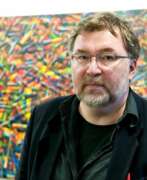

Petr Hrbek is a German artist of Czech origin, who lived and worked in Germany.
Petr Hrbek emigrated with his family to the Federal Republic of Germany as a teenager and studied at a free art school and at the Stuttgart State Academy of Fine Arts. In 1997 he opened his studio in Berlin and participated in many exhibitions in Germany and the Czech Republic.


Günter Huniat, born in 1939 in Thammühl, Czech Republic, is a distinguished German artist recognized for his contributions to painting and sculpture. His artistic journey is notable for its diverse expressions and mediums, with a prominent presence in the German art scene, especially in Leipzig where he has been active since 1963.
Huniat's works exhibit a unique blend of thematic elements and styles, showcased through various mediums such as woodcuts, lithographs, and etchings. His art is characterized by a deep exploration of form and color, often reflecting a profound understanding of the subject matter. Some of his notable works include "Am Meer," "Physiognomien eines Vogelfluges VII," and "Afternoon Song (Ch. Baudelaire)," each displaying his versatility in different artistic techniques.
His contributions to the art world extend beyond individual creations. Huniat was instrumental in the formation of the Erste Leipziger Autorengalerie in 1994, along with other artists, indicating his active involvement in the broader artistic community. His works have been featured in several museums and public collections, such as the Lindenau-Museum in Altenburg, Kunstsammlung Gera, Museum Ludwig in Köln, and the Germanisches Nationalmuseum in Nürnberg.
Huniat's work is not just limited to traditional canvases and sculptures; he has also made significant contributions in the field of book illustrations, enriching the literary world with his artistic insights.
For collectors, auctioneers, and experts in art and antiques, Günter Huniat's work offers a unique blend of traditional and contemporary artistic styles. His works, which have been featured in various auctions, continue to attract interest and admiration from the art community.
If you are keen to stay informed about new product sales, auctions, and events related to Günter Huniat's art, signing up for updates would be a beneficial move. This will ensure you receive timely information about opportunities to acquire pieces from this renowned artist's collection.


Magdalena Jetelová is a Czech installation artist and land artist, who has achieved international acclaim. Known mainly for her environmental installation works, Jetelová combines light, architecture, photography, sculpture, and installation to explore the relationship between humans, objects, and space. Her work has been exhibited in various prominent galleries internationally such as Museu d'Art Contemporani de Barcelona, Tate Gallery London, Museum of Modern Art, 21er Haus, and the Martin-Gropius-Bau. Her work is also in the collection of Hirschorn Museum, the Centre Pompidou, and the Museum Ludwig.


Jan Koblasa was a Czech sculptor, painter, graphic artist, author of philosophical essays and university lecturer. He studied at the Prague Academy of Fine Arts.
Jan Koblasa was a professor of sculpture at the Mufeus Art Academy in Kiel from 1969 to 1997. His lessons included traditional plastic forms of expression, such as portraits, figures and nudes, but he also gave his students great freedom for further artistic activity.
From 2002 to 2005, Koblasa taught as professor emeritus of sculpture at the Academy of Fine Arts in Prague.


Eva Kot'átková is a Czech installation artist and filmmaker living and working in Prague.
Eva studied at the Prague Academy of Fine Arts, the Prague Academy of Applied Arts, the San Francisco Art Institute and the Vienna Academy of Art. The artist's work combines sculpture, text and performance. Her installations usually consist of multiple objects, drawings, photographs, models, and sometimes videos. Her aim is to show how much our personal lives are influenced by our social environment. In her ongoing series "Theater of Talking Objects", Eva Kot'átková tries to find alternative ways of self-expression for those who cannot communicate and integrate in a standard way.
She is co-founder of the Anxiety Institute platform, which examines anxiety as a result of social, political, economic and environmental forces.


Jan Kotík was a Czech artist active from the 1940s.
Kotik was a member of Skupina 42 during World War II. Following the war his art was influenced by Chinese calligraphy. In 1956 he attended the Congress of Alba and signed up to the Final Resolution of the Alba Congress.
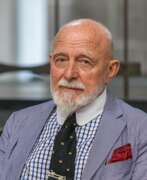

Markus Lüpertz is a German painter, sculptor, graphic artist, and writer. He also publishes a magazine, and plays jazz piano. He is one of the best-known German contemporary artists. His subjects are characterized by suggestive power and archaic monumentality. Lüpertz insists on capturing the object of representation with an archetypal statement of his existence. His art work is associated to neo-expressionism. Known for his eccentricity, German press has stylized him as a «painter prince».


Vladimír Novák is a Czech abstractionist artist.
Novak studied at the Prague Academy of Fine Arts. He works in an expressive and expressive style and is known for his series of drawings and paintings containing reflections on the relationship between the figure and space.


Erwin A. Schinzel was a Czech sculptor who lived and worked in Germany. He is deservedly called a classic of modern sculpture.
Schinzel studied at the Academy of Fine Arts in Berlin and was a freelance artist from 1945. He also worked as a professor at the International Academy in Bologna and at the International Academy of Fine Arts in Altenberg.
During his long life, Schinzel created hundreds of sculptures and demonstrated his skills in almost every genre. His work includes interior and fountain sculptures as well as outdoor sculptures, including many very realistic depictions of animals.
Schinzel's award-winning works are represented in numerous public and private art collections and have been exhibited worldwide in solo and group exhibitions.


Jan Smejkal is a renowned Czech artist. He embarked on his artistic journey at the Academy of Arts, Architecture & Design in Prague in 1967, further honing his skills at the Städelschule in Frankfurt am Main from 1968. Smejkal's artistry delves deeply into the process of capturing fleeting moments, meticulously transforming these instances from his drawings into intricate paintings. For approximately two decades since 2000, he resided in Berlin, where he and Ljuba Beránková managed the Bleibtreu gallery space.
Smejkal's unique approach involves creating a vast archive of drawn memories on postcard-sized papers, capturing various records of impressions, impulses, and details from his surroundings. These sketches serve as the foundation for his larger works, including paintings, text walls, and postcards. He skillfully integrates words on monochromatic canvases, inviting viewers to piece together their own narratives from the juxtaposed text. This technique renders his paintings as comprehensive wholes, meant to be perceived and interpreted in their entirety.
His contributions to the art world were highlighted at this year's Positions Berlin Art Fair, where he showcased some of his paintings at the booth of Hilgemann.art Gallery, further solidifying his influence and presence in the contemporary art scene.
For art collectors and experts keen on exploring the depths of contemporary Czech art, Jan Smejkal's works offer a profound narrative and visual experience. His ability to intertwine text with imagery opens up new avenues for interpretation and engagement with art.
Stay updated on Jan Smejkal's latest works and exhibitions by signing up for newsletters focused on the latest in art sales and auction events. This subscription ensures you're always in the loop about opportunities to acquire pieces by Smejkal, a pivotal figure in the realm of contemporary art.


.
Pravoslav Sovak was a Swiss visual artist and freelance graphic designer.
In the 1950s he perfected his graphic techniques and focused on black and white etchings. His first successful exhibitions were held in Prague, Vienna and Klagenfurt.
In the 1960s there was a turn to colour. Pravoslav Sovak painted and designed stage sets and costumes for Prague theatres and film studios.
In 2016, the Kunsthalle Mannheim paid tribute to Sovak's graphic work in a large-scale exhibition featuring landscapes and travel impressions with collage and watercolour elements.


František Štorek was a Czech sculptor.
Štorek's father and uncle owned a forge that supplied ornate Art Nouveau decorative elements, and the future sculptor learned this science from childhood. He studied at the Higher Industrial School of Sculpture and Stonemasonry in Gorzyca and at the Academy of Arts in Prague.
At first Štorek worked with stone and wrought iron, but since 1967 he has been working with bronze and iron sculptures welded from thick plates. He created figures and human torsos in the spirit of magical realism, and interpreted ancient myths. He is the author of the third largest bronze statue in the Czech Republic - Icarus in front of the municipality in Ostrava, and he also sculpted the fountain in the Puchov Vekoše residential complex in Hradec Králové.


Jaroslav Vacek was a Czech and Slovak artist and sculptor.
Jaroslav Vacek was one of the leading representatives of post-war artistic modernism. His work focused on the human figure, creating strongly geometricized or abstracted torsos. Vacek mainly created sculptures for public spaces. His works are represented in the National Gallery in Prague and in many other exhibition galleries.


















